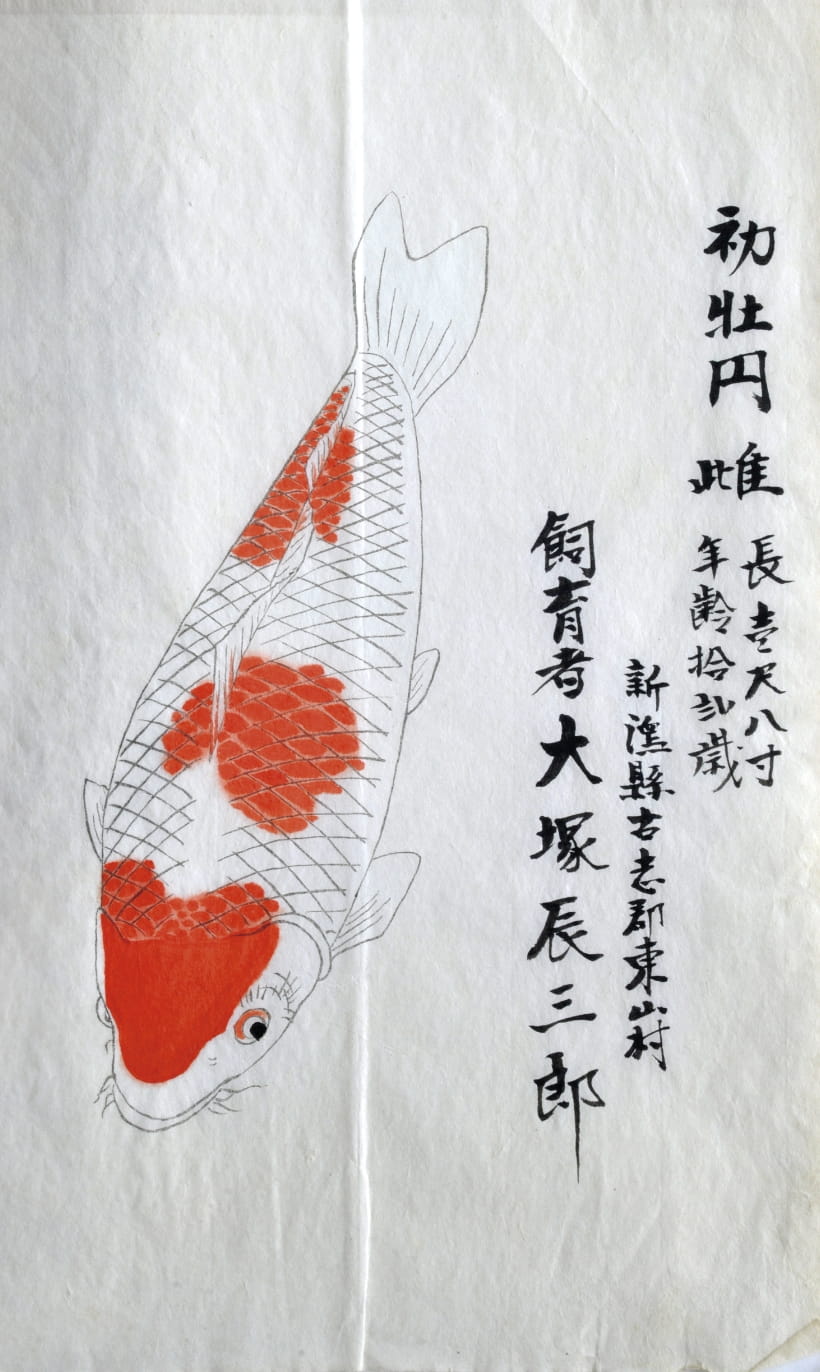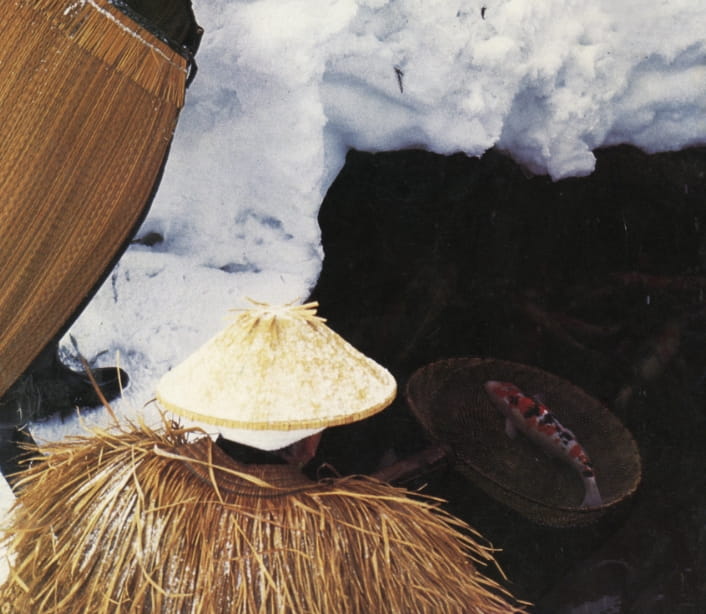The Birth and History of Nishikigoi
The Nishikigoi, the king of ornamental fish that Japan proudly presents to the world. Its birth dates back over 200 years ago to the late Edo period.
The current Yamakoshi area in Nagaoka City and the eastern part of Ojiya City in Niigata Prefecture were once called the Nijuumura. This region, often referred to as a “landlocked island,” was
isolated by heavy snowfall during the winter months. This is why the breeding of crucian carp thrived in the area during the winter months to secure food resources. Then, the emergence of sudden
mutations resulting in colour and pattern variations is considered the beginning of Nishikigoi. Afterwards, the villagers experimented, resulting in the creation of various breeds through trial and
error. The Tokyo Taisho Exposition of 1914 (Taisho 3), held at Ueno Park in Tokyo, marked a significant moment in the nationwide recognition of Nishikigoi. During its four-month duration, the event
attracted approximately 7.5 million visitors. Approximately twenty Nishikigoi (called “Kawarigoi” at the time) were exhibited, earning a silver medal. Moreover, Crown Prince Hirohito (later Emperor
Showa) was very fond of Nishikigoi, and they were brought to the Imperial Palace. Consequently, Nishikigoi significantly enhanced its value during this period, establishing its position as an art
form. In 2022, significant terms related to Nishikigoi and as well as the names and definitions of 21 varieties were standardized as part of the Japanese Agricultural Standards (JAS). Additionally,
it has become an essential component of the Japanese brand, being included as a critical export item. Thanks to the dedication and efforts of breeders, there are now over 150 varieties beloved not
only in Japan but also worldwide.

“Koi pattern sketch” of Koi exhibited at the Tokyo Taisho Exposition(1914)

Nishikoi viewing exhibition held on the rooftop of Nihonbashi Takashimaya(1930)

Overwintering at a time when indoor ponds were not widespread(1970)
